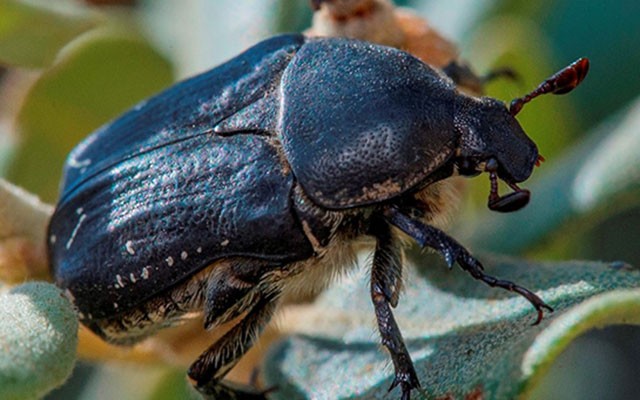A work of the Desertification Research Centre- mixed centre of the Spanish Research Council (CSIC), the Universitat de València and the Valencian Government- together with the Cavanilles Institute of Biodiversity and Evolutionary Biology (ICBIBE) of the Universitat de València and the University of Alcalá, analyse the impact of the fire on the biodiversity of the Mediterranean ecosystems. This article is published in PloS ONE journal.
Fire is a ecological and evolutionary process in many ecosystems. Characteristics and strategies of plants to deal with fires are well known. However, this knowledge is more limited in animals. Especially, the complexed networks of interactions that compose the biodiversity. Fire effects on this interactions and chain effects they can generate are not very well known. Understanding how fire affects animals is important to evaluate its effects on the biodiversity in ecosystems given to fire.
The researcher of the CSIC in the Centre of Research on Desertification, Juli Pausas, explains that “despite the abundance of plants that benefit from fire in the Mediterranean ecosystems, little is known about the possible presence of insects favoured by fire, other than bark beetles. During two years, we have sampled invertebrates after two major forest fires in eastern Spain, concretely in the fire of Andilla and Cortes of 2012 in Valencia, and we have observed that two species of ketonic, Protaetia morio and Protaetia onlonga, show a show pyrophilic behavior”. These ketonics are beetles that visit flowers, where eat pollen and nectar, and because of that are named flower beetle.
These beetles were more numerous after fires that in the areas unburned around the perimeter of the fire. Furthermore, these species tended to increase in number with the distance from the perimeter of the fire and with the recurrence of fire, especially Protaetia morio. Results were maintained during two years after the fire. Data from the beetles do not support the hypothesis of post-fire colonization, but the populations survived the fire as eggs or protected larvae on the ground.
“We thought that the increase in population size, compared to unburned areas, could be driven by the reduction in their predator populations, because the vertebrates that feed on these beetles were disadvantaged by fire, favouring the hypothesis of “release from predation”. In other words, results suggest that these species of flower beetle benefit from the fire because the fire alters the antagonistic interactions with its predators,” concludes Pausas.
For part of the Cavanilles Institute “the work consisted in the taxonomic and molecular identification of both species, that have been created in captivity in the Institute of the Universitat de València, in the Scientist Park, in order to determine their biological cycles”, according to Sergio Montagud, researcher in charge of research at ICBIBE.
Consequences of an increase in the flowers beetle in an ecosystem are not yet studied. In any case, the results of this work contribute to the understanding of the effect of fire in the modification of the food networks and animal interaction in an ecosystem.
Because of the pervasiveness of small mammals, soil insects and fires around the world, the cascading effect described in this study could be common to other ecosystems and could become the subject of future work.


